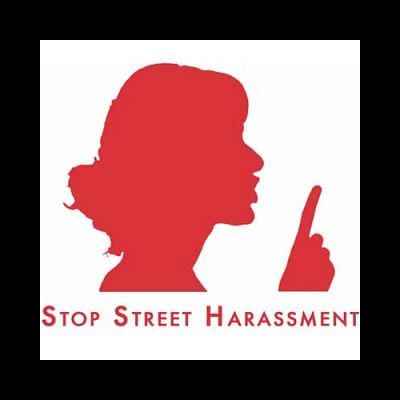Preventing street harassment

Generally street harassment means and includes unwanted comments, gestures, and actions forced on a stranger in a public place and are directed at them because of their actual or perceived sex, gender, gender expression, or sexual orientation.
Street harassment, like other forms of sexual harassment, can induce a variety negative mental health effects on victims. In research it is found that that exposure to harassment from strangers is an important factor in women's perceptions of their safety in public. Harassment from a stranger, as opposed to an acquaintance, is more likely to induce fear of sexual victimization. Another study published in 2010 reported that the experience of street harassment is directly related to a greater preoccupation with physical appearance and body shame, and is indirectly related to heightened fears of rape. Stranger harassment reduces feelings of safety while walking alone at night, using public transportation, walking alone in a parking garage, and while home alone at night.
Addressing the problem the crime prevention strategies can be applied to intervene. Crime prevention strategies attempt to reduce and deter crime and criminals. It is applied specifically to efforts made by governments to reduce crime, enforce the law, and maintain criminal justice. Criminologists have been at the forefront of analysing what work to prevent crime. Prestigious commissions and research bodies, such as the World Health Organization, United Nations have analysed their and others' research on what lowers rates of interpersonal crime.
Crime prevention strategies includes four major prevention strategies-
1. Developmental prevention refers to interventions designed to prevent the development of criminal potential in individuals, especially those targeting risk and protective factors discovered in studies of human development.
2. Situational prevention refers to interventions designed to prevent the occurrence of crimes by reducing opportunities and increasing the risk and difficulty of offending.
3. Community prevention refers to interventions designed to change the social conditions and institutions (e.g., families, peers, social norms) that influence offending in residential communities.
4. Criminal justice prevention refers to traditional deterrent, incapacitative, and rehabilitative strategies operated by law enforcement and criminal justice system agencies.
To understand how to apply those strategies, risk factors must be identified first. In Bangladesh, the major risk factors for street harassment are social format, unimproved street lighting, inadequate use of technology (less cctv monitoring), gender role of the society, violence-supportive attitude and cultural norms of the society, culture of insecurity, economic inequality, drug abuse, addiction to pornography, religious fundamentalism, inadequate and less enforcement of laws, lethargic role of police, less public awareness programs, overall less public-safety measures in the streets.
Formation of attitude towards such violence is a major concern here. People who support traditional gender-roles are more likely to express violence supportive attitude. In everyday social and family relations, violence is there. So it becomes normal to the children raising in such social format. Moreover, children who watch violence in family are also prone to violence to solve conflicts. From early childhood, boys get better treatment in families that give them a view of superior role-playing. Peer influences, exposure to pornography, portraying women in narrow sexualized ways are also responsible to form such attitude.
So saying about the prevention strategies firstly, developmental prevention can be done by incorporating educational programs in schools on gender-role, egalitarianism of gender, culture of tolerance, raising empathy for female victims, emphasizing the perceived consequence of such violence (getting caught, negative response from family and peers). Anti- violence education is applicable to people of all ages but the content and format of any educational programs should vary at different stages of human development. The infants and pre-school children, school-age children, adolescent and adults are needed to be targeted for such education.
Secondly, situational prevention can be done by designing the city establishment and by taking security measures like improved lighting, using cctv camera in public space and transport, adopting city safety plan, providing training and tips to women to avoid high-risk situation (carrying pepper spray or taking picture or video by using cell-phone), using self-defense technique and fight back, instant protest, react and seek help from other stand- bys, reporting to the nearest police station etc.
Thirdly, community prevention can be done by ensuring safety of women in the community by watching, monitoring and prevention while street harassment happening in the community. Local NGO's, small community female groups can participate here. Adopting rape prevention program in locality or community can be an example of such prevention that already adopted by some cities.
Lastly, criminal justice prevention can be done by enforcement of laws, speedy disposal of cases and exemplary punishment by the judiciary, separate female police station for anti-violence against women, providing attention and better treatment to victims and witnesses, enforcement of rights as victim.
To note, punishments for street harassment are there under section 354 and 509 of the penal code 1860. But it is a matter to re-think that whether the punishments are adequate according to the gravity of the crime.
The writer is Lecturer of Law, Bangladesh Open University.

 For all latest news, follow The Daily Star's Google News channel.
For all latest news, follow The Daily Star's Google News channel. 



Comments